The 10 Coolest New AWS Tools Of 2023 (So Far)
From Amazon Bedrock and AWS Supply Chain to new instances and data security offerings, here are the 10 coolest new AWS offerings launched in 2023.

From new generative AI tools to supply chain and cybersecurity services, the innovation engine at Amazon Web Services in 2023 has been roaring.
The Seattle-based $85 billion worldwide cloud computing leader launched 10 new and enhanced AWS services and tools that have the market buzzing.
AWS’ focus in 2023 has been on launching new product offerings around generative AI, data security, serverless, Internet of Things, unified software development and cloud cost optimization.
[Related: Microsoft’s CoreWeave Deal ‘Adds AI Pressure’ To AWS, Google]
On the artificial intelligence front, Amazon CEO Andy Jassy said earlier this year that AWS’ future in generative AI is bright.
“Let’s just say that LLMs [large language models] and generative AI are going to be a big deal for customers, our shareholders and Amazon,” said Jassy. “We have been working on our own LLMs for a while now, believe it will transform and improve virtually every customer experience, and will continue to invest substantially in these models across all of our consumer, seller, brand and creator experiences.”
In addition, AWS in 2023 has focused on creating new tools that drive cloud cost optimization and automation. “AWS customers [are] telling us they’re not cost-cutting as much as cost-optimizing so they can take their resources and apply them to emerging and inventive new customer experiences they’re planning,” said Jassy.
As of first-quarter 2023, AWS is the worldwide market leader for enterprise cloud services, owning roughly one-third of the global market share, followed by Microsoft at 23 percent share and Google Cloud at 10 percent share. AWS revenue increased 16 percent year over year to $21.4 billion during its first-quarter 2023.
Here is why these 10 cool new Amazon tools are top of mind for customers, partners and AWS’ future.
* Amazon Bedrock
* AWS Supply Chain
* Amazon Security Lake
* Amazon Aurora I/O Optimized
* AWS DMS Serverless
* Amazon EC2 Inf2
* AWS IoT Device Defender With Security Hub
* Amazon CodeCatalyst
* Cloud Operations Competency
* AWS Control Tower
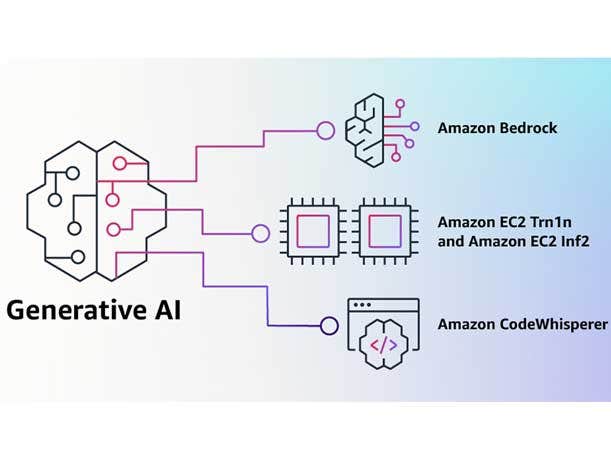
Amazon Bedrock For Generative AI
With the boom in generative AI this year, AWS launched a new service for building and scaling generative AI applications that provides customers with easy access to innovative foundational models.
“Amazon Bedrock offers customers the easiest way to build and scale enterprise-ready generative AI applications,” Ruba Borno, AWS’ global channel chief, told CRN last month. “Bedrock makes pretrained foundational models from AI startups, like Anthropic and Stability AI, easily accessible via an API. And it also offers Amazon Titan foundational models developed by AWS.”
Amazon Bedrock is a fully managed service that makes foundational models (FMs) from leading AI startups and Amazon available via an API so users can choose from a wide range of FMs to find the best model for individual use cases.
With the Bedrock serverless experience, users can get started quickly customizing FMs with their own data, followed by integration and deployment into their applications using familiar AWS tools.
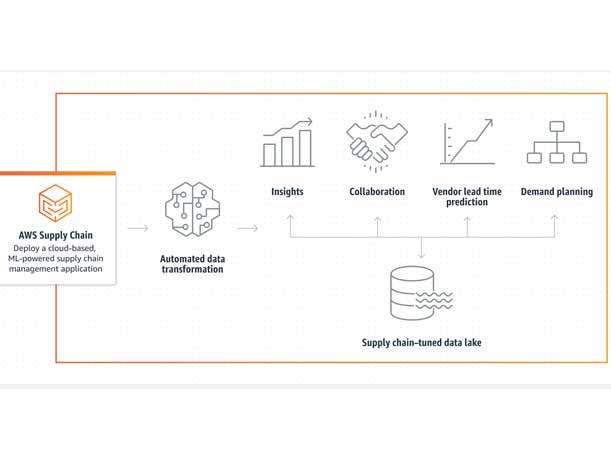
AWS Supply Chain Increases Supply Chain Resilience
AWS Supply Chain is helping supply chain leaders mitigate risks and increase supply chain resilience.
The new AWS Supply Chain unifies supply chain data, provides machine learning–powered connectors and actionable insight, and offers built-in contextual collaboration. It is designed to help users increase customer service levels by reducing stock-outs and help lower costs from overstock.
AWS Supply Chain provides a real-time visual map feature showing inventory selection, quantity and health in each location, machine learning-powered insight, and targeted watchlists to alert users to potential risks.
When a risk is uncovered, AWS Supply Chain provides inventory rebalancing recommendations and built-in contextual collaboration tools that streamline coordination across teams. AWS Supply Chain connects to users’ existing ERP and supply chain management systems, all without replatforming, up-front licensing fees or long-term contracts.
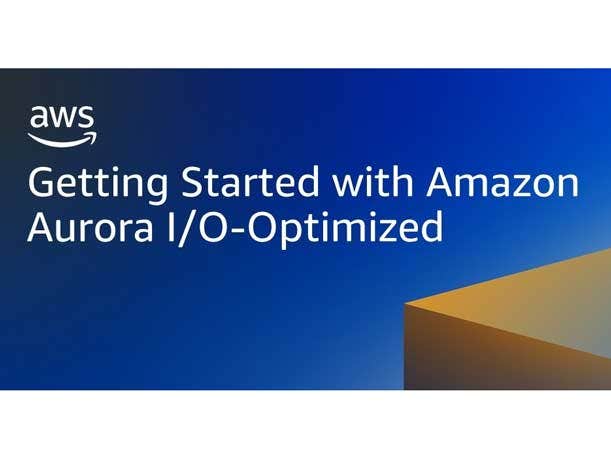
Amazon Aurora I/O Optimized Configuration
AWS this year launched its new Amazon Aurora I/O-Optimized configuration that strips out I/O costs by improving price performance and predictable pricing for customers with I/O-intensive applications.
With Aurora I/O-Optimized, there are zero charges for read and write I/O operations—users only pay for their database instances and storage usage, making it easy to predict their database spend up front.
Users can now choose between two configurations: Aurora Standard or Aurora I/O-Optimized.
For applications with low to moderate I/Os, Aurora Standard is a cost-effective option. For applications with high I/Os, Aurora I/O-Optimized provides improved price performance, predictable pricing and up to 40 percent costs savings. Users can switch their clusters with a single click in the AWS Management Console or with a command through the AWS Command Line Interface.
Aurora I/O-Optimized configuration is supported on Aurora Serverless v2 and provisioned instances, both on demand and reserved, including existing Aurora reserved instances.
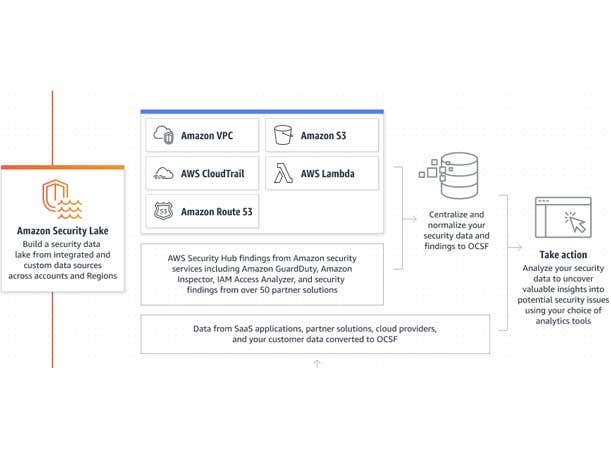
Amazon Security Lake Becomes GA
In late May, AWS’ highly anticipated Amazon Security Lake service became generally available.
Security Lake centralizes security data from AWS environments, SaaS providers, on-premises and cloud sources into a purpose-built data lake that is stored in a customer’s AWS account. With Open Cybersecurity Schema Framework (OCSF) support, the service normalizes and combines security data from AWS and a broad range of security data sources.
Security Lake automates the collection of security-related log and event data from integrated AWS services and third-party services. It also helps users manage the life cycle of data with customizable retention and replication settings.
The new offering helps analysts and security engineers with broad visibility to investigate and respond to security events, which can facilitate timely responses and helps to improve security across multi-cloud and hybrid environments.
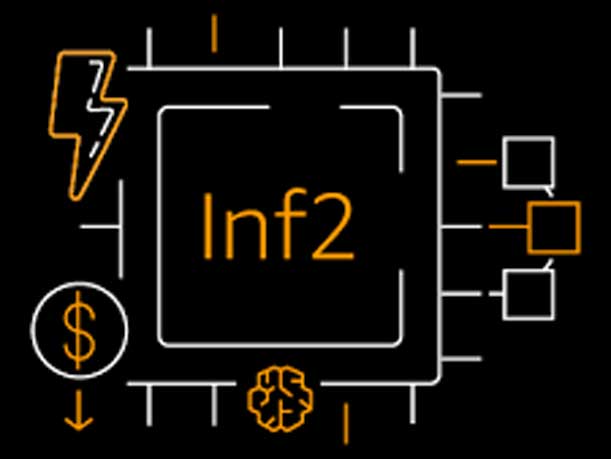
Amazon EC2 Inf2 To Make ‘Generative AI Cost-Efficient’
AWS’ Amazon EC2 Inf2 instances are powered by AWS’ own Inferentia2 chips, which lowers the cost of running large-scale generative AI workloads.
“We’re making generative AI cost-efficient from a best-in-class infrastructure perspective,” AWS’ Borno told CRN.
“If you think about generative AI, there’s two types of work being done: One is the inferences, and the other is the training that has to happen. So training the models and then inferring answers from the model,” she said. “Amazon EC2 Inferentia2 instances deliver 4X higher throughput and 10X lower latency compared to the prior generation. And 40 percent better inference price performance than any other EC2 instance. So we’re really enabling inference.”
AWS’ move to lower costs and energy consumption aims to make generative AI more accessible to a wider variety of customers.
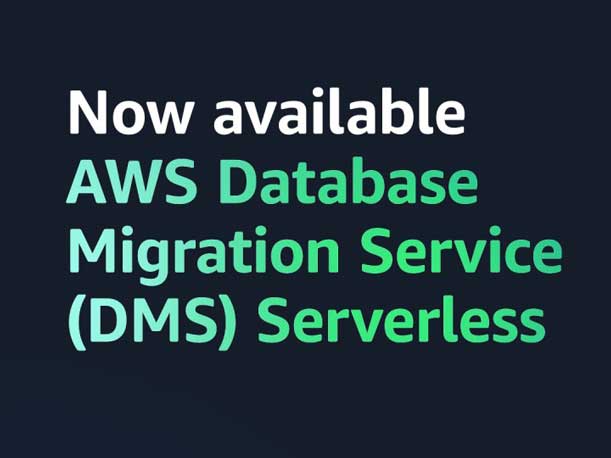
AWS DMS Serverless For Migration And Data Replication
In June, Amazon launched a new serverless option for its popular AWS Database Migration Service (DMS).
The new AWS DMS Serverless offering automatically sets up, scales and manages migration resources to make a customer’s database migrations easier and more cost-effective.
AWS DMS Serverless removes the guesswork of figuring out required compute resources and handling the operational burden needed to ensure an uninterrupted migration. It performs automatic capacity provisioning, scaling and capacity optimization of migrations, allowing users to quickly begin migrations with minimal oversight.
Customers can use AWS DMS Serverless to migrate databases and help build modern data strategies by synchronizing ongoing data replications into data lakes like Amazon S3 or data warehouses, such as Amazon Redshift, from multiple or disparate data sources.
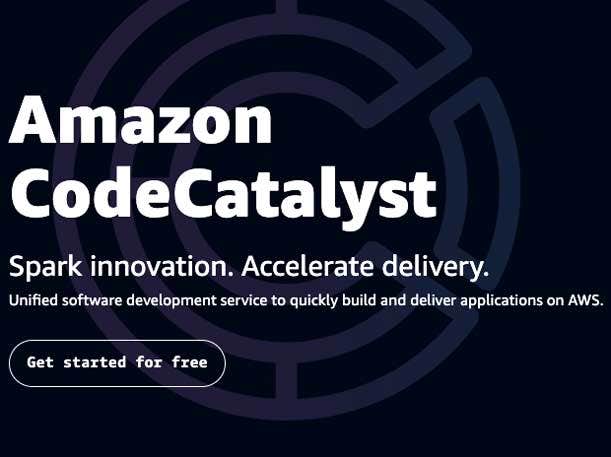
Unified Amazon CodeCatalyst For Software Development
The new Amazon CodeCatalyst is a unified software development and delivery service that enables teams to quickly plan, develop, build and deliver applications on AWS, with the goal of reducing friction throughout the development life cycle.
Made generally available in April, Amazon CodeCatalyst is a unified tool that smooths out the rough edges that slow down software delivery with features to make it easier for teams to work together.
Users can launch new products in minutes using blueprints with virtually everything needed—from source code to service configurations. Customers can easily define continuous integration and continuous delivery (CI/CD) pipelines and run them on automatically scalable compute environments.
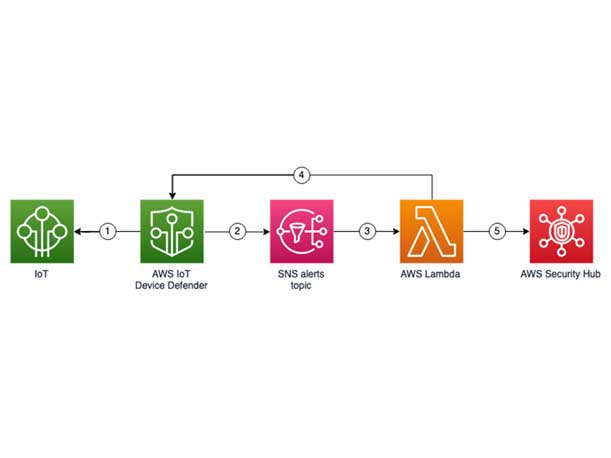
AWS IoT Device Defender Integrated With Security Hub
AWS integrated its IoT Device Defender security management service with its AWS Security Hub to enable customers to ingest alarms and their attributes from AWS IoT Device Defender features in one central location without custom coding.
The new feature also helps offload or reduce the complexity of managing disparate workflows from multiple security consoles when they review devices monitored by AWS IoT Device Defender.
“Device Defender means that every IoT device connected—and we have hundreds of millions of those—if there is a security issue on it, AWS customers now have a Security Hub. We added an IoT alarm to that hub,” Yasser Alsaied, vice president and head of AWS IoT, told CRN earlier this year. “If you have any security threat on any of your, let’s say, millions of IoT devices—you can see it right there immediately and you can deal with it.”
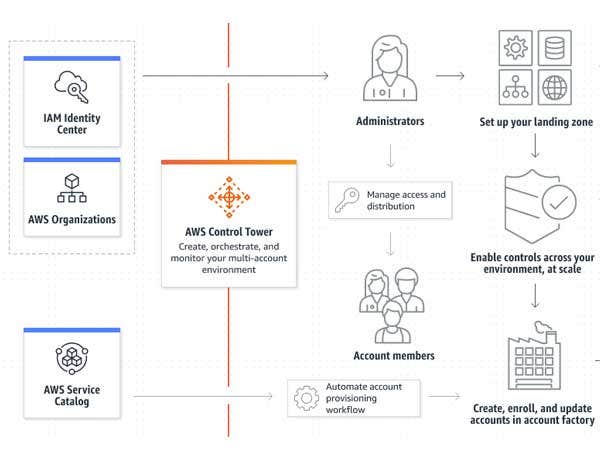
AWS Control Tower Creates 28 New Proactive Controls
Recently, AWS launched 28 new proactive controls for its AWS Control Tower aimed at enhancing its governance capabilities. AWS Control Tower orchestrates multiple AWS services while maintaining security and compliance needs.
The 28 proactive controls for AWS Control Tower boost the offering’s governance capabilities by allowing users to implement controls at scale across their multi-account AWS environments by blocking noncompliant resources before they are provisioned for services such as AWS OpenSearch Service, AWS Auto Scaling, SageMaker and Amazon RDS.
AWS’ new controls help customers meet control objectives such as data encryption at rest or limit network access. The Control Tower’s proactive control capabilities leverage AWS CloudFormation Hooks to identify and block noncompliant resources proactively before AWS CloudFormation provisions them.
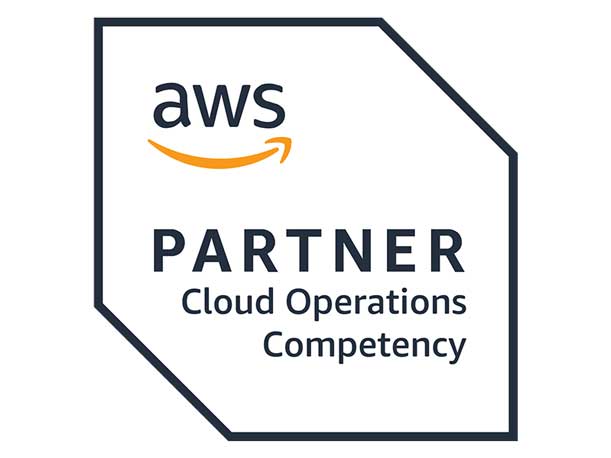
Cloud Operations Competency For Partners
AWS is pushing partners to drive cloud cost efficiency and ROI for customers with its new AWS Cloud Operations Competency that provides skills, marketing resources and financial incentives to channel partners who achieve the competency.
Cloud overspending is top of mind for businesses in 2023 as many organizations migrated workloads to the cloud over the past few years, spurred on by the COVID-19 pandemic.
AWS Cloud Operations Competency covers five solution areas of cloud operations and helps partners set up, build, migrate, and operate securely and efficiently with an integrated approach to cloud operations. The five areas AWS trains and tests partners on include financial management, cloud governance, compliance and auditing, monitoring and observability, and operations management.
Partners who achieve AWS competencies gain early access to new product road maps, earn financial incentives, get more ways to engage with AWS experts and receive access to cloud operations technical enablement events.